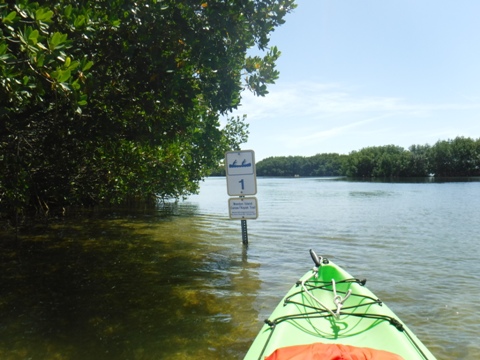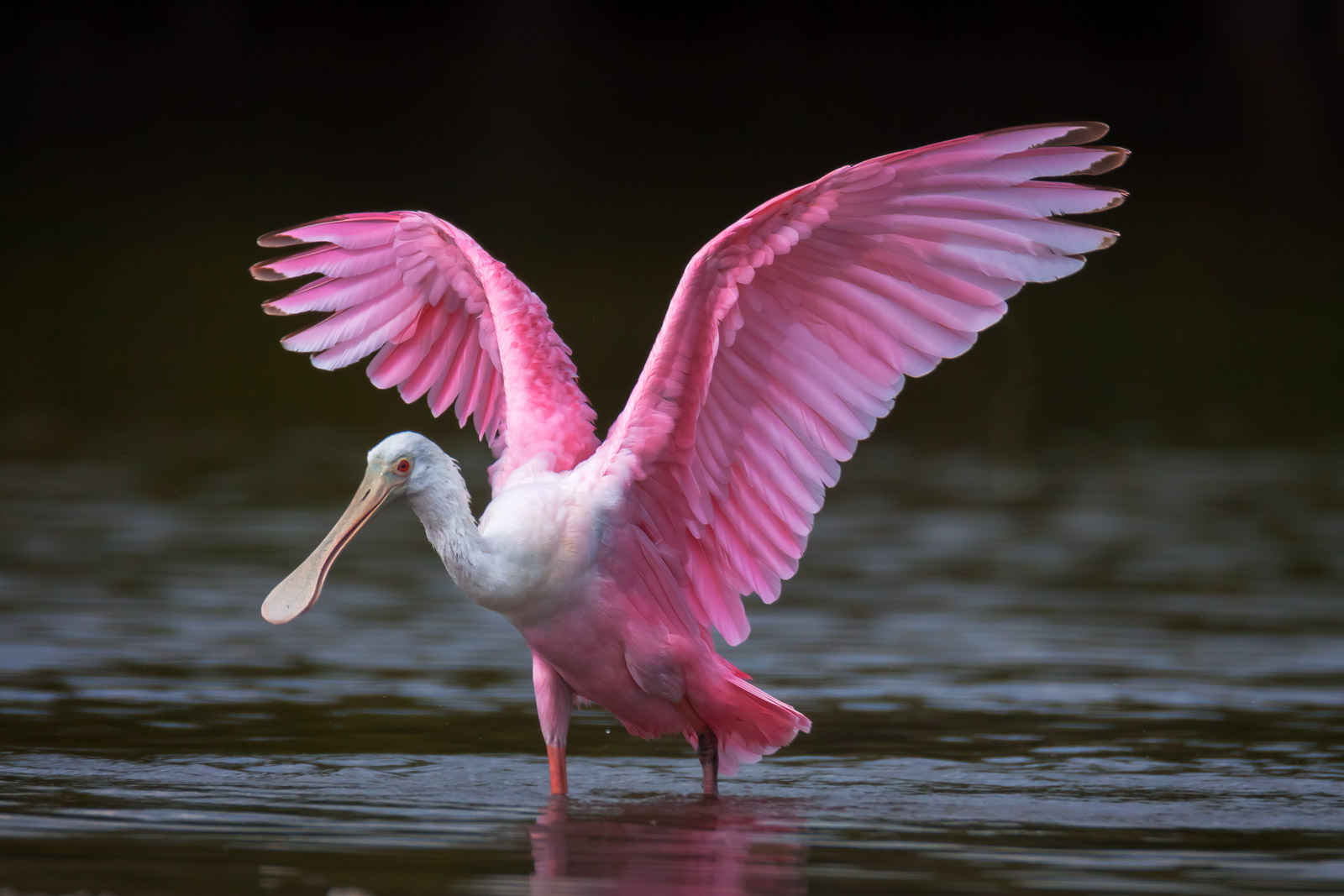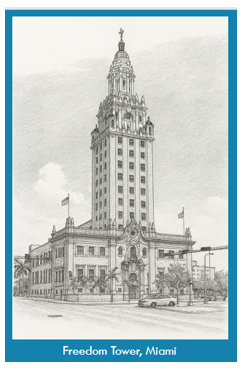- Home
- Florida History
- Florida Heritage Sites
- Weedon Island Preserve
WEEDON ISLAND PRESERVE
By Mike Miller November 17, 2025
OVERVIEW
Weedon Island Preserve covers 3,190 acres of Weedon Island in northeast St. Petersburg, Florida. It protects mangrove forests, salt marshes, and upland hammocks.
Tocobaga burial mounds and other Native American artifacts found in the preserve put it on the National Register of Historic Places.
A cultural center displays artifacts and exhibits. The preserve borders Tampa Bay.
 Kayaking the paddling trail at Weedon Island Preserve
Kayaking the paddling trail at Weedon Island PreserveIts trails and boardwalks wind through coastal habitats with beautiful views of the bay.
HISTORICAL SIGNIFICANCE
Native Americans occupied Weedon Island for over 3,000 years. The Weedon Island culture ran from the central Gulf Coast to north Florida.
Their descendants, the Tocobaga people, built shell mounds and villages here. They fished and hunted in the bay. The presence of the Tocobaga was documented by Spanish explorers in the 1500s.
European contact, diseases, and conflicts ultimately decimated their descendants by the mid-1700s, with survivors integrating into Seminole or other groups.
European settlers arrived on the island in the 1800s, clearing acreage for farms and fisheries. Weedon Island was named after Dr. Leslie Weedon, a Tampa doctor and amateur archaeologist who owned the island in 1898.
In later years speakeasies, a Hollywood movie studio and a 1930s airport came to the island.
In the 1960s archaeologists uncovered Tocobaga tools and pottery at the site. Before the preserve was formed in 1981, ownership of the land was split between the Weedon family, private developers, and the city.
Now it’s owned by the State and managed by Pinellas County.
The preserve joined the National Register of Historic Places in 2008 for its Native American sites.
The listing protects its burial mounds and shell middens as rare coastal archaeology. The shift saved it from industry and development.
 Roseate Spoonbill
Roseate SpoonbillVISITING DETAILS
The preserve is at 1800 Weedon Drive NE, St. Petersburg, FL 33702. Take I-275, exit 28, then go east on 4th Street North.
The preserve is open daily from 7:30 a.m. to sunset. The three-story Cultural and Natural History Center is open Thursday through Saturday, 9 a.m. to 4 p.m. and Sunday 11 a.m. to 4 p.m.
It’s closed Monday through Wednesday and during county holidays. Check out the nearly 40 foot long, 1,100 year old dugout canoe found on the shoreline in 2011 and painstakingly restored.
The gift shop carries cultural and natural history items. Parking lots are near the entrance. Rent a kayak at the center and explore four miles of paddling trails.
There are nearly two miles of handicap-accessible boardwalks and pavement in the preserve, and over 4.7 miles of boardwalks and trails overall.
Birdwatching from the boardwalks is a popular activity. You could see a Roseate Spoonbill, one of Florida’s beautiful pink wading birds.
A 45-foot observation tower along the west boardwalk loop gives you a great view of the preserve as well as Tampa Bay and the cities of St. Petersburg and Tampa.
There is a fishing pier and a boat ramp for canoes and kayaks. Restrooms and picnic tables are on site.
WEEDON ISLAND PRESERVE WEBSITE
LOCATION MAP

Florida is the fastest-growing state in the United States and also the fastest-changing. If you see anything in this article that has changed or is in error, please let me know.
Our free daily Ezine, Florida Heritage Travel, has 12,000 subscribers. We also have 130,000 followers on Facebook who love off the beaten path Florida.
By Mike Miller, Copyright 2009-2025
Florida-Back-Roads-Travel.com
Florida Back Roads Travel is not affiliated with or endorsed by Backroads, a California-based tour operator which arranges and conducts travel programs throughout the world.
